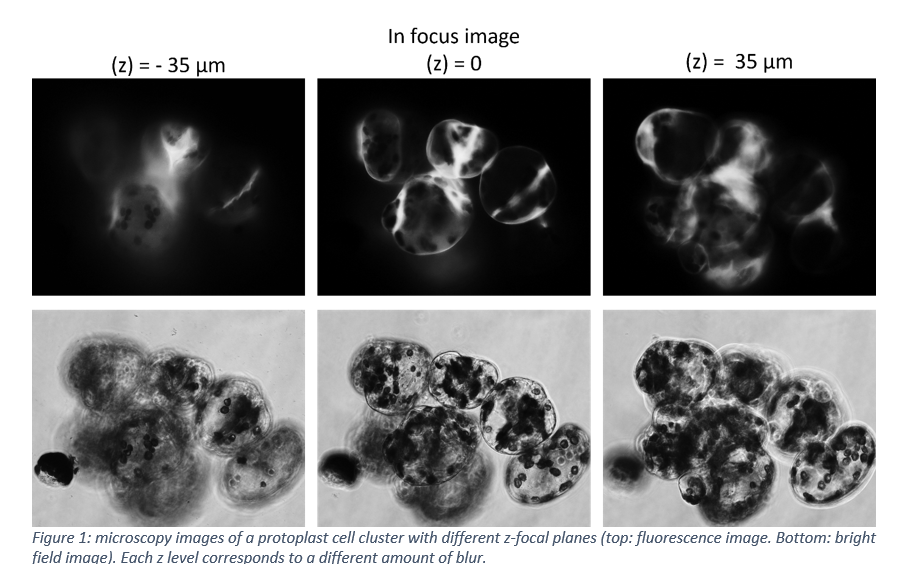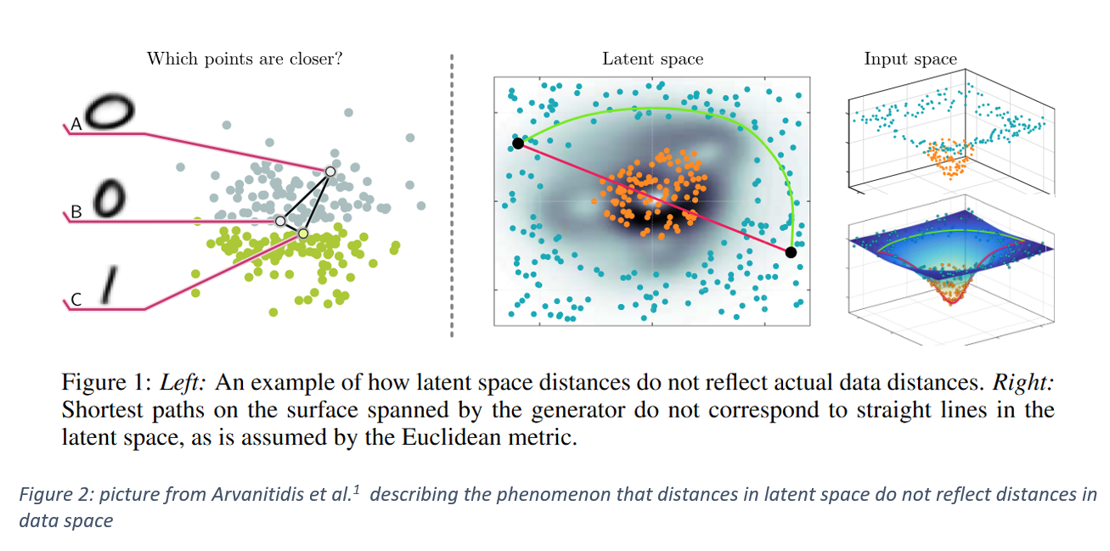Master Assignment
Deep learning techniques for deblurring cell images utilizing (Riemannian/Differential) geometry.
Type: Master CS
Period: TBD
Student: (Unassigned)
If you are interested please contact :
Description:
To predict how a plant will grow, it is important to investigate how division planes in plants form on a single cell level. To build prediction models of the plant cell division and their division planes, we need clear microscopy images. For real microscope setups, such clean images are usually not acquired, they always have a certain level of blur (see Figure 1).
We know a blurred image is an in-focus image convolved with a blurring kernel. To get clean non-blurry images, one has to solve the deblurring deconvolution problem. The big issue is that the blurring kernel is unknown. To learn the blurring kernel and deblur images, it has been shown in the literature that Deep Learning is a successful tool.
The goal of this project is to create a deep learning method for deblurring that uses information from the geometry of the (image) data manifold1, 2 to improve deblurring. For the project, protoplast microscopy data will be provided on which the developed deblurring approach can be tested.
One possible approach is to create an autoencoder of images and find a path in latent space between two blurry versions of an image that has a clean deblurred image in between. The easiest path would be a linear interpolation in latent space. However, the real blurring might not correspond to a linear interpolation in latent space. This is related to the observation that distances in latent spaces do not correspond to distances in data space1, 2. In particular, this means that distances in latent spaces do not correspond to distances between images with different levels of blur1, 2. So we want to embed the data geometry in the learned manifold such that we can find nonlinear paths in latent space that correspond to blurring and deblurring of an image.
Keywords: latent space, deblurring, differential geometry, Riemannian geometry
References:
1 Arvanitidis, G., Hansen, L. K., & Hauberg, S. (2017). Latent space oddity: on the curvature of deep generative models. arXiv preprint arXiv:1710.11379.
2 Chadebec, C., Mantoux, C., & Allassonnière, S. (2020). Geometry-aware Hamiltonian variational auto-encoder. arXiv preprint arXiv:2010.11518.






